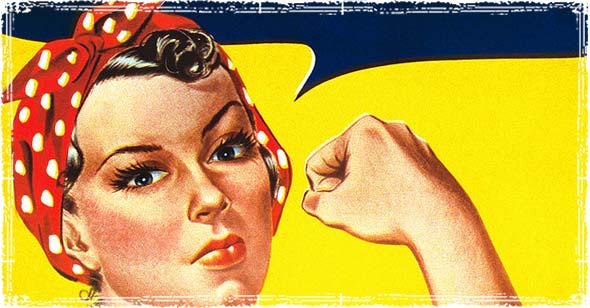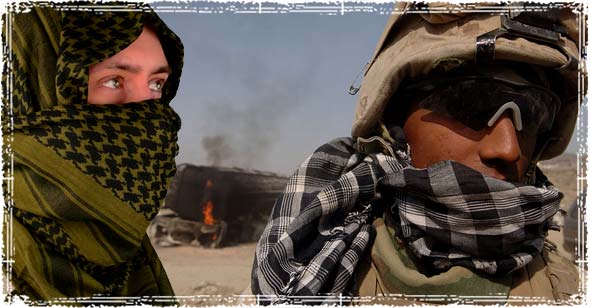When it comes to prepping, all too often people get caught up in the “need to buy every expensive piece of gear to survive” mentality. Not only is that type of thinking wrong, it can be downright dangerous. The truth is, when it comes to survival it’s not the expensive gear that’s going to get you out alive; it’s your knowledge, training and ingenuity that will be most important.
In the spirit of survival ingenuity, we are going to look at how a little $1 prep item can have dozens of survival applications.

The Survival Bandana
Believe it or not a bandanna is a very handy survival item. They’re cheap (about $1 a piece), take up very little room in your bag, and have dozens of real-world survival applications and uses. When looking for any piece of gear for my survival bags, multi-use items always rank at the top of the list.
For an outdoorsman, survivalist, or prepper this seemingly useless piece of cloth has hundreds of uses.
So why is the Bandana such a good survival item? Here a few reasons to add one to your emergency bags:
- They can help keep you warm: In a pinch, a bandana can be used as an emergency hat or neck wrap, helping to provide extra warmth during a cold weather emergency.
- It can help you stay cool: During a hot weather emergency, a bandana when soaked in water can be used to keep your head cool and prevent problems like heat exhaustion. They can also be wrapped around the neck, helping to cool the blood pumping through your carotid arteries.
- They Absorb Sweat. When hiking in the hot desert, I like to wear one to absorb the sweat before it drips down into my eyes.
- They make great Emergency Masks: While not as effective as something like an N95 respirator mask, a bandana can be used and a makeshift breathing mask. In areas with lots of dust, they can be used to help you breath.
- They protect you from the sun: Tucking one into the back of a wide brim hat is a great way to protect the back of your head and neck from dangerous UV Rays. Soaking it in water first is a great way to stay cool while hiking.
- To signal for help: Bright colored Bandana can be tied to a stick and used as a signal flag.
- For cleaning: They can be used as rags for cleaning.
- For use as an emergency bandage: Bandanas can be used to cover wounds, ripped apart to create small Band-Aids, and even used to wrap a sprained leg or wrist.
- They can be used to make cordage: In a pinch, bandanas can be ripped apart and used as cordage.
- They can be used as a Fire starter: When ripped into small squares, cotton bandannas can be easily made into charred cloth – an excellent fire starter.
- For making Torches: When wrapped around a stick, and covered in something like petroleum jelly, bandanas can be used to make the top of a torch.
- To construct a makeshift weapon. Wrap a decent size rock into the middle of a bandanna, and you have yourself a makeshift weapon to fend off an attack.
- To help filter water: They can be used to help filter debris out of water, as a first stage filter.
- To mark trails: They can be used to help you find your way back to camp when exploring unknown trails.
- To make a Bum Bag: Tied together at the corners, they make a great way to carry small objects.
- Potholders: They are great for grabbing hot pots of the campfire.
Adding one more use to your bandanas:
Head for Survival ORANGE Triangular Bandana

While a little pricy, the Head For Survival bandanas are a pretty cool concept. Not only are they a heck of a lot larger than a normal size bandana, but they also contain vital survival information printed right on the fabric. Topics include Navigation, Fire Starting, Shelter, Water Collection and Purification, Signaling, Knots, and more. If $10 is a little too much for you to pay for a single bandana, you could always buy a dozen regular bandanas for about the same price.
The Shemagh (Keffiyeh) Scarf

Another take on the Bandana, something that is commonly worn in desert climates throughout the Middle East is the Shemagh(Keffiyeh) Scarf Head Wrap.
The shemagh– also called a keffiyeh and ghutrah – is a soft piece of woven cotton cloth, which can be used in the same way as a bandana. While they are similar, shemaghs are often stronger, thicker and larger than traditional bandanas. A typical bandana is about 22” x 22”; the typical shemagh is 42”x42”.
They have been used by military forces throughout the world for years, especially those serving in the Middle East.



I’m laughing here! A bank robber just used his bandana to cover his face while using his shot gun to rob our local bank. His 3rd time doing this so his days are numbered as the FBI is riding the MO/IA border ready to nap him and his bandana!
Some ski resorts and outdoor stores sell maps on bandana’s. I like to buy them as they work great because they never rip or fall apart.
They are also good for wiping goggles and sun glasses.
Also they are probably one of the best things to use as a tourniquet.
They can also be used as a trail marker, or a marker so you can find your favorite hunting blind.